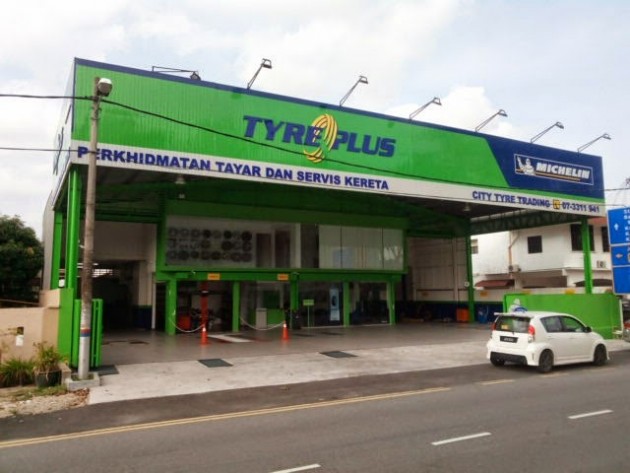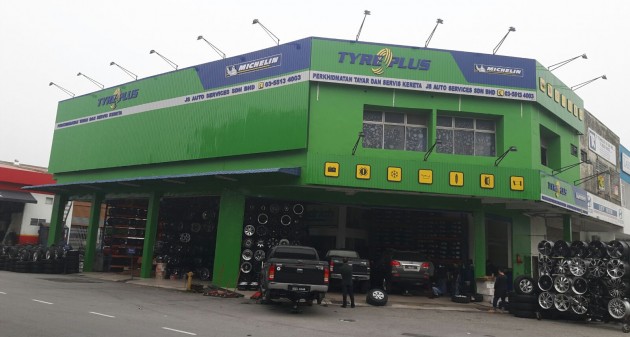What do you drive? A Proton? A Honda or a Porsche? Regardless of what car you own or how much horsepower the engine produces, at the end of the day, only four contact points ensure that your vehicle remains planted on the road.
We are of course referring to tyres. Like other components of a car, they need to be properly maintained, and should they wear out, replaced as well. However, not many people are aware of the complexity of those “black and round” things. Here are some pointers on the basics of tyres, how to pick the right ones, proper maintenance for safety purposes, and how to perform regular checks, brought to you by TYREPLUS. Let’s start with what makes a tyre.
Tyres are made up of several components. Beneath the visible tread, you’ll find the crown plies that provide the tread’s rigid base, for fuel economy and comfort. This layer is reinforced by the carcass ply, thin textile fibre cables bonded into the rubber. These cables are responsible for determining the strength of the tyre.
In modern tubeless tyres, an airtight rubber (normally butyl rubber) replaces the inner tube. Whenever you pump air into the tyre, it enters this chamber. Even though it is pretty impermeable to significant leakage, air loss can still occur over time so regular checks are still needed. The bead meanwhile, clamps the tyre firmly against the wheel rim.
A tyre’s sidewall is its most visible part. This part of a tyre flexes to provide comfort and stability during driving, while protecting the tyre from impacts with curbs. Besides that, it also contains markings that tell you all the important information relating to a tyre. Take for example a tyre with the measurements 185/60 R14. In this instance, 185 refers to the tyre’s width, 60 refers to the sidewall’s height that is equal to 60% of the tyre width, R for radial (circular) tyre and 14 for the wheel diameter it fits on (14-inch).
There are also additional information located on the tyre’s sidewall including its load index (maximum load carrying capacity of the tyre at the maximum pressure), speed index (maximum speed capability of the tyre) and maximum load and pressure. To ensure your tyres are pumped to its optimum pressure for your car, refer to the tyre placard (usually stuck on the driver’s door sill, rear door sill or inside fuel flap) or the vehicle owner’s manual.
With the basics sorted, we move on to the process of buying a tyre. First, you need to consider the climate of the area you’ll be driving on. In Malaysia, we alternate between wet and dry roads, with both having distinct requirements of tyres. The best choice would be an optimum combination that reduces the risk of aquaplaning and provides sufficient grip.
Secondly, consider the usage pattern. It wouldn’t make a lot of sense to fit tyres that aren’t able to tolerate high speeds on a Porsche 911 GT3 RS when tackling a race track. Similarly, standard road-going tyres won’t be appropriate for an off-road vehicle either. For standard daily use on highways and in cities, a tyre which provides minimum braking distance in wet and dry conditions are best. Those who cover plenty of highway miles will appreciate comfort and silence.
After you’ve purchased the new tyres, you’ll need to make sure that they are properly maintained. This includes monitoring the tyre pressure, tyre wear and remaining tread depth, along with alignment and balancing. Additionally, it is important to look out for any damages or irregularities in tyre wear, which could reduce the life span of your tyre.
It’s clear that tyres are certainly not something to be taken lightly, as they play an important role in keeping you safe on the roads. Therefore, it’s due diligence to ensure that you visit a proper tyre retailer that can guide and educate you further on getting the best “shoes” for your car.
For more information on how to be safe and save with your tyre purchase decisions, visit the TYREPLUS Tips/Care Page here.
TYREPLUS is an independent professional network of tyre retail stores that can be found in eight states across Malaysia – Johor, Kedah, Pahang, Perak, Pulau Pinang, Selangor, Terengganu, and Kuala Lumpur. TYREPLUS offers genuine Michelin tyres, along with tyre-care services including repair, balancing and alignment.
Established in 2002 and currently present in 22 countries worldwide, the chain’s services aren’t limited to just tyres, as they also offer oil and battery changes, comprehensive brake inspection and replacement, and minor mechanical repair services. With reputable partners like Total, Bosch, Castrol and Motul, you can be assured that only original parts and lubricants go into your ride.
So, if you’re in need of a new set of tyres, or unsure whether your current ones are due a replacement, head over to a TYREPLUS store closest to you, which you can find via the TYREPLUS dealer locator function.










